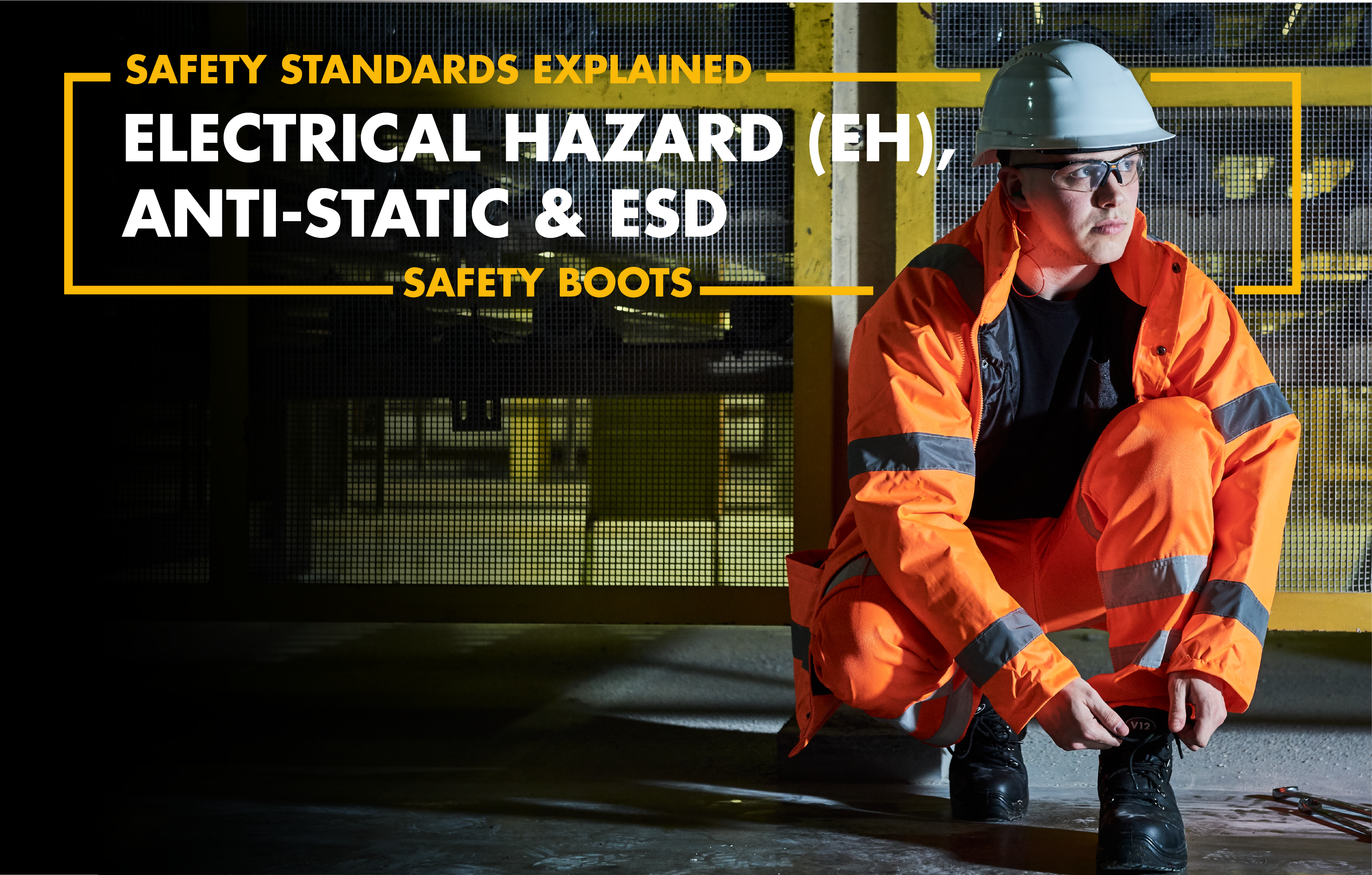Electrical hazard (EH) rated safety boots
EH‑rated boots feature non‑conductive soles to isolate the wearer from the ground, offering a certain amount of protection from accidental exposure up to 600V AC.
EH safety footwear is not certified for live electrical work, and is not part of EN ISO 20345. This is because they're based on ASTM (American Society for Testing and Materials) standards instead. The limitations of EH Boots (ASTM) are:

- They provide electrical insulation only via the sole
- They are not tested against voltages above 600V AC
- If the sole is punctured (e.g. by a nail), protection is void
So, EH footwear is NOT SUITABLE for live electrical working.
The HSE (Health and Safety Executive) have said the following on EH boots and some of the misconceptions around their ability to prevent electrocution:
"Footwear tested to this (the EH) Standard is NOT SUITABLE for live electrical working. These may be suitable for use in environments where there is potential for accidental exposure to alternating current (AC) voltages not exceeding 600V AC.
EH footwear will not offer protection from electric shock if the outer sole has been penetrated by a nail or other sharp objects and therefore should not be marked with claims of perforation resistance."
Main causes of electrical injury or electrocution
Electric contact can occur in many ways and situations including:
-
Defective/damaged tools or badly maintained equipment
-
Inadequate wiring and improper grounding
-
Unsafe work practices or environments
-
Unexpected exposure to electric parts
-
Overloaded circuits and improper insulation
-
Contact with overhead power lines or high voltage circuits
Anti-static and ESD footwear
The difference between anti-static and ESD can cause confusion: while they both refer to contact resistance, there's a big difference.
 Anti-static
Anti-static
Designed with resistance between 0.1 - 1,000 megaohms (MΩ) measured according to EN ISO 20344: 2011 5.10, anti-static footwear prevents the build-up of static electrical charges in the human body by sending these charges to the ground.
This in turn protects sensitive electrical equipment from being damaged from a static shock, charge or spark being passed on by a user, as well as providing protection to wearers working in potentially explosive atmospheres.

ESD
ESD (Electrostatic Dissipative) safety boots have a lower electrical resistance range of 0.1 - 100 MΩ (measured according to BS EN IEC 61340-4-3:2018) and so offer a stronger electrostatic charge control.
So, ESD footwear does the same job and offers the same benefit as anti-static footwear, but because of its lower resistance range, ESD is the more stringent version of the two.
Wearing ESD and anti-static footwear is crucial when working in environments featuring a risk of shocks and equipment being damaged from passed-on static charges.
When AND WHERE to Choose Each Boot Type
- Working around electronics or potentially explosive atmospheres? Choose anti-static boots.
- Handling sensitive electronic components or high-risk static environments? Need a stronger electrostatic charge control. Consider ESD footwear.
- Working on EVs or high-voltage electrical installations? You need to consider dielectric/insulated footwear to prevent conduction - because EH boots are not primary protection from live electrics.
Remember: it's unlikely that you'll be made responsible for judging whether you require anti-static or ESD footwear by whoever employs you. They're the ones who will have or will be given the appropriate knowledge of which type of electrostatic footwear you'll need, based on the hazards and equipment in your work setting.
Looking for safety boots with ESD protection? Check out our super lightweight and chemical-splash proof ESD safety boot 'Hyrax' by clicking the button below.



.png)

